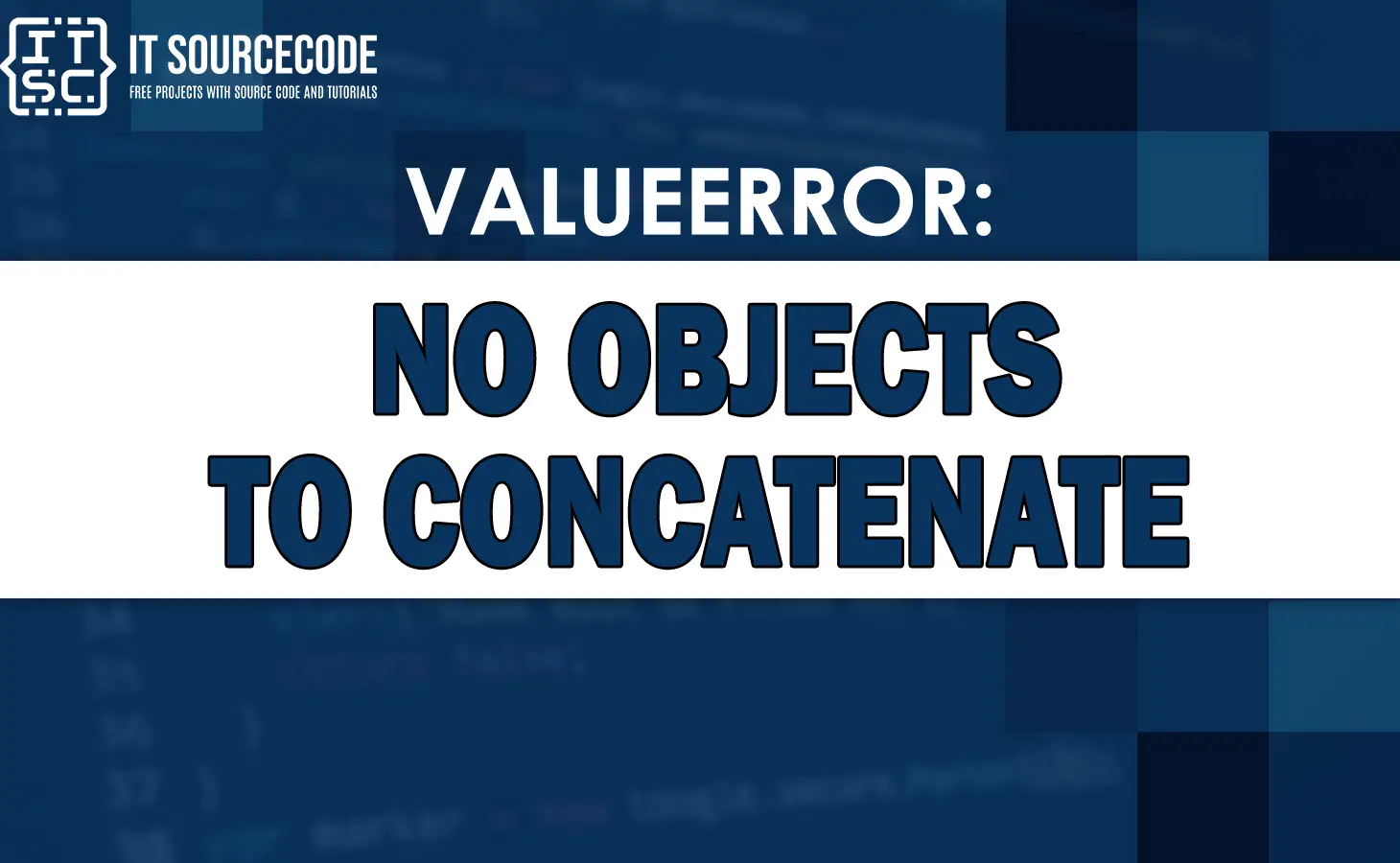In Python programming, you may encounter the ValueError: No objects to concatenate error when attempting to concatenate or combine two or more objects that are empty or do not exist.
This error typically occurs when using the + operator to concatenate strings, lists, or other iterable objects.
In this article, we will show some examples of situations where this error can occur and provide solutions to resolve it.
Common Causes Leading to ValueError
When you encounter the ValueError No objects to concatenate error, it is important to identify the cause of the issue.
Below are some common causes that can lead to this error:
- Concatenating Empty Strings
- Concatenating Empty Lists
- Missing or Incorrectly Named Variables
How the Valueerror Reproduce?
Here’s an example of how the error occurs:
Example 1: Concatenating Empty Strings
string1 = ""
string2 = "Hello"
result = string1 + string2
In this example, string1 is an empty string, and concatenating it with string2 will raise a ValueError because there are no objects in string1 to concatenate.
Example 2: Concatenating Empty Lists
list1 = []
list2 = [1, 2, 3]
result = list1 + list2
In this example, list1 is an empty list, and concatenating it with list2 will result in a ValueError because there are no objects in list1 to concatenate.
Example 3: Missing or Incorrectly Named Variables
variable1 = "Hello"
result = variable1 + variable2
In this example, variable2 is either not defined or misspelled. Attempting to concatenate variable1 with variable2 will raise a ValueError because variable2 does not exist.
Solutions for Fixing the ValueError No Objects to Concatenate
To fix the ValueError message “no objects to concatenate“, we can implement different solutions depending on the specific scenario. Let’s explore some possible solutions below:
Solution 1: Check and Handle Empty Objects
If you are concatenating strings, lists, or other iterable objects, it is important to check if the objects are empty before attempting to concatenate them.
Here’s an example of how to handle empty strings:
string1 = ""
string2 = "Example Articles"
result = string1 + string2 if string1 else string2
print(result)Output:
Example Articles
In this example, we use a conditional expression (if string1) to check if string1 is empty.
If it is empty, we assign string2 directly to the result variable.
Otherwise, we perform the concatenation as usual.
Solution 2: Ensure Variable Existence and Correct Naming
To avoid the ValueError: No objects to concatenate error due to missing or incorrectly named variables, you should verify that all variables are defined and named correctly.
Here’s an example:
variable1 = "Concatenate"
variable2 = " Example"
result = variable1 + variable2
print(result)Output:
variable1 = “Hello”
variable2 = ” World”
result = variable1 + variable2
In this example, we ensure that both variable1 and variable2 are defined with their respective values before concatenating them.
Frequently Asked Questions
This error occurs when you attempt to concatenate empty or nonexistent objects using the + operator. Make sure the objects you are trying to concatenate are not empty and are properly named.
To concatenate strings safely, you can use a conditional expression to check if the string is empty before concatenating.
Check if the lists you are trying to concatenate are empty. If one of the lists is empty, you can assign the non-empty list directly to the result variable.
es, ensure that all variables are defined and named correctly. Double-check the spelling and existence of the variables before attempting to concatenate them.
Conclusion
The ValueError: No objects to concatenate error can be easily resolved by following the proper solutions based on this article.
Remember to handle empty objects and check the existence and correct naming of variables before performing concatenation operations.
By implementing these solutions, you can fix this error and ensure smooth execution of your Python code.

